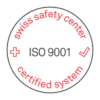Obsolescence Management
Obsolescence management (OM) is generally understood as a structured and controlled process for predicting and reducing product obsolescence. This entails the permanent unavailability of products, for example, when the production of a very specific electronic component is discontinued. This is exactly when obsolescence management serves its purpose – counteracting this process: critical parts, components, raw materials, and software are systematically recorded, analyzed, and monitored. This means that a clean obsolescence management program begins in the development phase. In the design of electronic assemblies, several factors have a positive effect on the duration of manufacturability, especially:
- Release of second-source components
- Life cycle analysis of components
- Reduction of the variety of components
Types of Obsolescence Management
Basically, there are three different types of OM: strategic, proactive, and reactive.
- Strategic: second-source strategy, preferred components, holistic process
- Proactive: life cycle analysis, data maintenance, monitoring, contracts with suppliers, risk assessment
- Reactive: Product Change Notifications (PCN), Product Discontinuation Notifications (PDN), End of Life (EoL), redesign, second-source testing, Last Time Buy (LTB), long-term storage
Reactive and proactive OM complement each other. A purely reactive OM is often too late to completely avoid the consequences of obsolete components, materials, or software. Therefore, the proactive OM collects and analyzes information at an early stage and prompts the reactive solution-finding process to begin early enough to identify a selection of alternatives. A holistic OM is ideal. It incorporates an energetic, close information exchange between external parties as well as research and development, product managers and purchasing.
How important is Obsolescence Management?
If an electronic assembly needs to be manufactured for many years, OM is a very important topic. The previously selected strategy will determine in which life cycle phase the most effort is to be expected.
Therefore, a clean strategic OM can make a significant contribution to reducing subsequent product maintenance efforts as early as in the development phase. If the OM is ignored or neglected, there is already a risk of problems in the production phase, such as supply bottlenecks or quality deficiencies, which can lead to production stoppages.
The consequences of supply bottlenecks can be mitigated with a sufficiently large inventory or rapid second-source releases. However, in the case of longer-lasting situations, such as the necessity for a major redesign, a production stop for at least a short time may not be preventable. In this case, the follow-up costs can quickly exceed the costs for an efficient OM.
konplan and Obsolescence Management
With experienced, competent employees, konplan will gladly support you in obsolescence management for your development projects and product maintenance. Regardless of whether it is about optimizing the OM for new designs or the redesign of affected assemblies. As an interdisciplinary service provider, konplan provides comprehensive support – not just in terms of electronics, but also with porting or modifying the software/firmware and with important mechanical adjustments.
______________________________________________________________________________
Author:
Raphael Marzà, Embedded Systems Engineer
We are here for you – send us your request!
Developing together! We put your ideas into practice and accompany your projects until they are ready for the market. Get in touch with our experts now.

